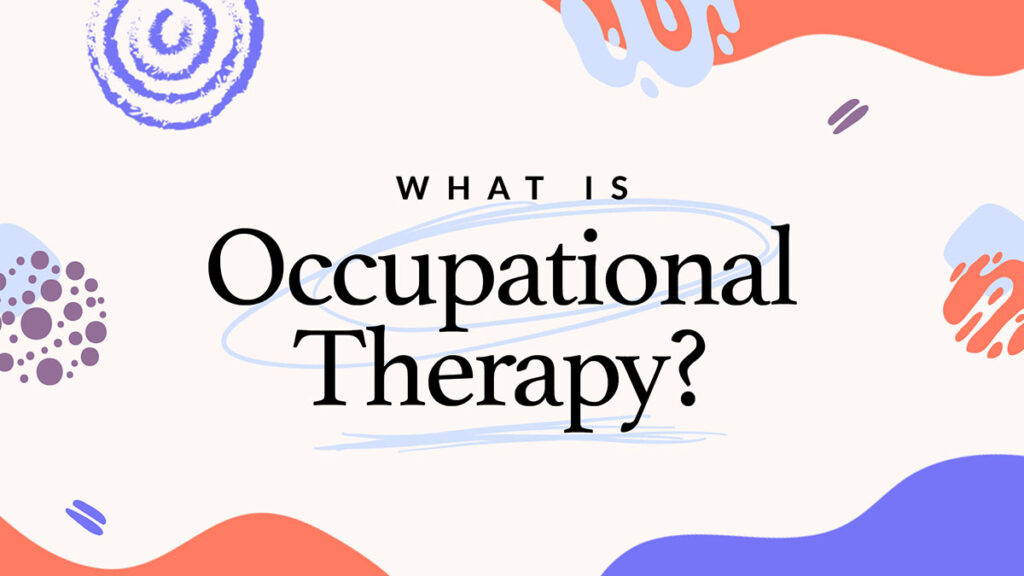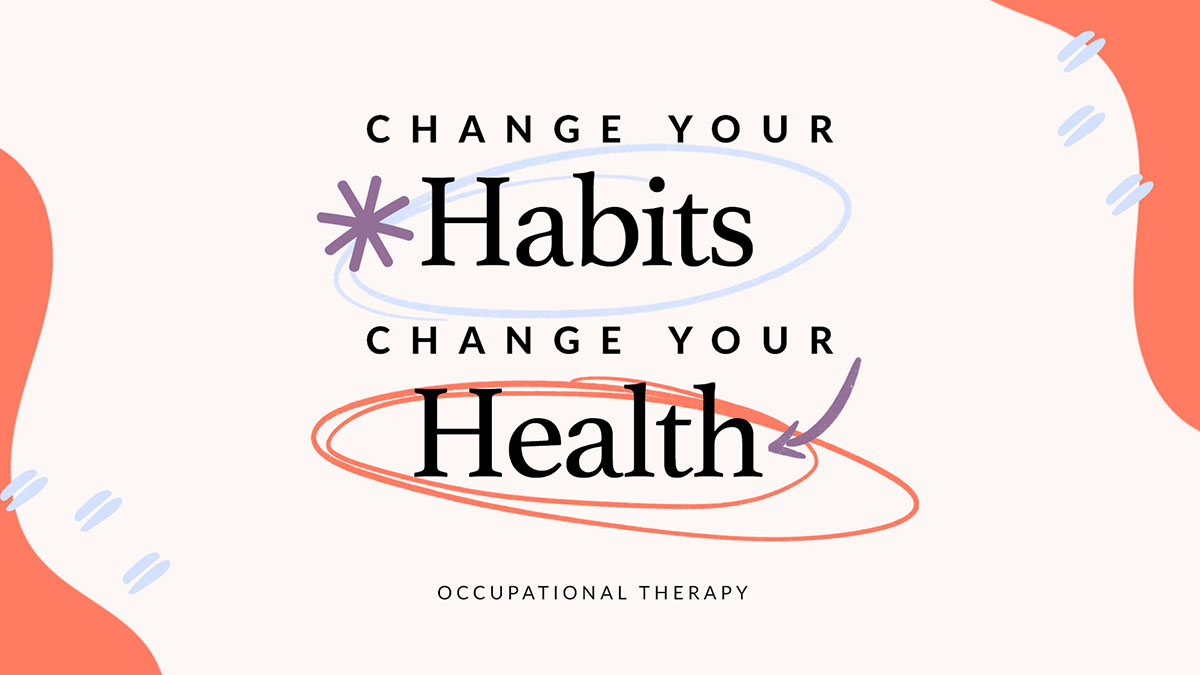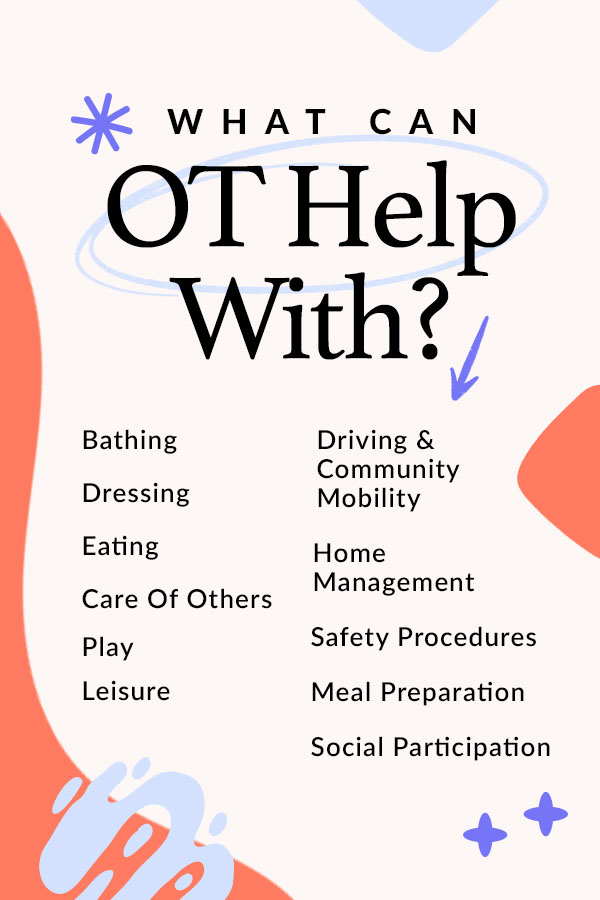What is OT / Occupational Therapy?
By Sarah Lyon, OTR/L
January 18, 2024
In occupational therapy, you set goals, take action—and, ultimately, change your habits to change your health.
Occupational therapy professionals partner with you and your care team to help you understand how your diagnosis impacts your daily life, set goals, and guide you on your healing journey.
OT is safe, cost-effective, and backed by scientific research.
Occupational therapy can be provided by occupational therapists (OTs) and occupational therapy assistants (OTAs). This article covers the many dimensions of our wonderful profession. We will dive into the specifics of OT, including:
- What do occupational therapists do?
- How can you find an OT near you?
- Why is occupational therapy important?
- What can you expect when you visit an occupational therapist?
- What are some examples of OT?
- Where do OTs work?
- What’s the difference between OT and PT?
- What is an average OT salary?
- How to become an occupational therapy professional

What do occupational therapists do?
When you change your habits, you change your health.
This mantra is at the heart of occupational therapy. As occupational therapists, we believe YOU have the power to influence your own health. And, one of the most powerful ways to do so is by addressing your day-to-day habits. We help our clients do the hard work of changing how they do things on a daily basis—with the ultimate goal of improving their health.
In some cases, a life-changing event (like a stroke or a car accident) forces a client to do things differently. We work alongside them to build new habits that will speed their recovery and enable them to participate in life as fully as possible with their new circumstances.
We also help clients with chronic conditions build habits to manage their condition—and, when possible, prevent the condition from progressing.

How can you find an OT near you?
As a potential client, one of the best ways to learn about OT is to check out the occupational therapy professionals in your area.
You can search directly below or head to our OT Directory for even more guidance on finding an occupational therapy professional in your area.
Why is occupational therapy important?
There have been incredible advances in healthcare when it comes to surgery, medication, and technology.
And yet, the most powerful influencer over your health is still YOU.
In our complex healthcare system, you are your own best advocate. And, in many ways, you have the power to impact your own health in a positive way.
Occupational therapy is an important piece of the healthcare puzzle, because OT empowers you to improve your health by changing your own habits.
Our approach as OTs is unique, because we take the time to understand your health holistically—and figure out what matters to you in your daily life. We call these your “valued occupations.” These daily occupations are at the center of your therapy goals, and you’ll spend a lot of time practicing them during your OT sessions. Read on to see what this entails.
What areas can OT help with?
In collaboration with you, we’ll look closely at the daily habits and routines related to your health condition. In OT, we call these “activities of daily living” or “ADLs.”
Here is the complete list of ADLs an OT can help with, as outlined by our official practice framework:
Bathing • Care of Others • Communication • Dressing • Community Mobility • Eating • Education • Financial Management • Functional Mobility • Health Management • Home Maintenance • Leisure • Meal Preparation • Personal Device Care • Personal Hygiene • Play • Spiritual Activities • Sleep • Safety Procedures • Sexual Activity • Shopping • Social Participation • Toileting and Toilet Hygiene • Work
The scope of occupational therapy is broad. For this reason, many practitioners choose to specialize in a particular focus area.

Areas of OT specialization
Below is a list of common focus areas. Some are labeled as specific diagnoses while others are types of therapy.Click on a focus area to find OTs who specialize in that particular diagnosis or therapy type. Areas with an asterisk will take you to a full guide explaining that specialization.
- Aging in Place
- ADHD
- Amyotrophic Lateral Sclerosis (ALS)
- Aquatic Therapy
- Assistive Technology*
- Autism
- Burns
- Cancer
- Cerebral Palsy*
- Chronic Conditions
- Chronic Pain
- Cognitive Rehabilitation
- Dementia*
- Drivers Rehabilitation
- Dystonia
- Ergonomics
- Fitness
- Hand Therapy*
- Health Promotion
- Hippotherapy
- Home Modifications
- Industrial Rehabilitation
- Intellectual and Developmental Disabilities (IDD)
- Lifestyle Medicine
- Low Vision
- Lymphedema
- Maternal Health
- Mitochondrial Disorders
- Multiple Sclerosis
- Nature-based Therapy
- Neurodiversity
- Neurorehabilitation
- NICU
- Orthopedics
- Osteogensis Imperfecta
- Parkinsons Disease
- Pelvic Health*
- Postural Orthostatic Hypotension (POTS)
- Rare Diseases
- Rheumatic Diseases
- Seating and Mobility
- Sexuality/Intimacy
- Social Determinants of Health*
- Spinal Cord Injury
- Stroke
- TBI
- Trauma-Informed Care
- Tourette Syndrome
- Vestibular Rehab
Another great way to learn about specialization is to explore the certifications available to OT professionals, which are usually denoted by additional letters following a therapist’s OT credential. Examples include:
- Assistive Technology Professional (ATP)
- Seating and Mobility Specialist (ATP/SMS)
- Certified Aging in Place Specialist (CAPS)
- Certified Brain Injury Specialist (CBIS)
- Physical Agent Modalities (CPAM)
- Certified Lymphedema Therapist (CLT and CLT-LANA)
- Certified Health Coach (CHC)
- Certified Kinesio Taping Practitioner (CKTP)
- Lee Silverman Voice Training – Big (LSVT)
To learn more about the many optional certifications available to OTs, check out these posts:
What can you expect when you visit an occupational therapist?
An occupational therapist’s work varies across settings, but no matter the setting in which you see an OT, our care tends to follow this flow:
Occupational therapy evaluation
It all starts with an evaluation, where your occupational therapist collects information on your health history, health status, and any activities that are currently limited. We will also ask you questions about your goals.
Occupational therapists have access to an incredible number of standardized OT assessments, many of which are targeted to specific diagnoses. Your OT will complete any assessments relevant to your condition and treatment goals during your evaluation. (The OT may re-administer these assessments throughout your treatment in order to measure your progress.)
The OT then uses this information to work with you (and/or your family or caregivers) to create a plan of care (POC). A POC includes specific goals—both short-term and long-term—as well as the treatment techniques the OT will employ to help you achieve those goals.
Occupational therapy treatment
Subsequent treatment sessions focus on some combination of providing physical, emotional, and/or cognitive interventions to help you progress toward your goals.
Therapists also consider whether modification of their clients’ daily environment (and/or certain activities) may help set them up for success.
There is so much to discuss when it comes to treatment, but check out these three posts to start:
Discharge from occupational therapy
After a certain point, you will be “discharged” from OT. When someone is discharged from occupational therapy treatment, it means that they no longer need the skilled oversight of a therapist to continue making progress.
However, it does not mean the road to recovery or change is over.
Our goal throughout OT treatment is to empower you and your caregivers to manage your health condition—and you should leave OT with a self-management plan.
What are some examples of OT?
Here are two examples of occupational therapy—one with a child and one with an adult.
- Say your child is born with cerebral palsy and has one arm that does not work as well as the other. Often, the child’s instinct is to use that arm less—which means they are limited in how they do things.
An occupational therapist would help the child build habits to safely use that arm more—so they could do more things and avoid complications from non-use.
- Say you have a stroke or injure your spinal cord. Suddenly, you have to re-learn how to get ready for the day (among many other things). Occupational therapists have learned from decades of experience and research the safest and most efficient way to help you do this.
When you work with an OT, you’ll have the best knowledge science has to offer—and you can thus avoid learning habits that may lead to more injuries and health problems.
To see how occupational therapy helps clients play an active role in managing their own health, watch our explanation of OT video on YouTube.
Where do OTs work?
There are about 139,600 occupational therapist jobs and approximately 49,000 occupational therapy assistant and aid jobs in the United States
You can visualize the many places where OTs work by reviewing the treatment setting graph below, which is derived from the AOTA 2023 Salary and Workforce Survey.
Here are links to more info on each setting:
Where OTs Work by % in Each Setting

*Percentages derived from the AOTA 2023 Salary and Workforce Survey.
What’s the difference between occupational therapy and physical therapy?
If you’re familiar with physical therapy, you may be wondering how it differs from occupational therapy. This is a great question.
Occupational therapists (OTs) and physical therapists (PTs) are quite similar in some ways, as both are rehabilitation professionals who strive to help patients return to their prior levels of function or achieve their greatest possible level of function.
The key difference is that OT focuses more on improving a client’s ability to perform daily activities, while PT focuses more on the improvement of specific body movement(s).
You can think of a PT as a human body mechanic, and an OT as a guide for reintegration into normal life.
Is OT supported by research?
The short answer is “yes.” Research backs the efficacy of occupational therapy.
The longer answer: Right now, about 1,000 research articles related to occupational therapy come out every year. So, there is a lot of scientific evidence for your therapist to draw on when designing your plan of care.
Each person is unique in their health status and the challenges they face, so we always do our best to balance the science with each individual patient’s unique situation and needs. We call this evidence-based practice.
One of the easiest ways to learn more about the evidence supporting the occupational therapy treatment you are receiving is to ask your occupational therapist. You can also consult OT Potential’s roundup of the “100 Most Influential OT Research Articles,” a resource covering the most-cited medical research articles that reference OT interventions.
See our full list of OT journals here.
What is an average OT salary?
According to our custom calculation, OTs earn $79,538 per year on average. This number is influenced by where you live, the clinical setting in which you work, how many years you have practiced, the types of patients you work with, and whether you have pursued a specialty.
We cover OT salary extensively in the Occupational Therapy Salary Guide.
How to become an occupational therapy professional
In the United States, you can practice OT as an occupational therapist or an occupational therapy assistant.
The main difference between the two is that OTs perform initial evaluations and create treatment plans in addition to delivering those treatments. OTAs solely deliver treatments based on the OT’s treatment plans.
How to become an occupational therapist
To become an occupational therapist, you’ll first need to complete high school and college—and then go on to earn a graduate degree in occupational therapy (either a master’s or a doctorate).
Once you get through OT school, you’ll need to pass the NBCOT exam (our national certification exam) and become licensed in your state. Most states also require that you complete a certain amount of continuing education each year to keep your license active.
You can read more about the differences in OT degrees here.
How to become an occupational therapy assistant
OTAs earn associate’s degrees or bachelor’s degrees from certified programs. From there, they must also pass the national exam from NBCOT before practicing or getting licensed in their particular state. Read here for a complete overview of the OTA scope of practice.
Some OT departments also employ occupational therapy aides. These are non-licensed professionals who do not deliver OT treatments, but do help with the daily operations of the department.
Conclusion
I hope this has flung the door to the wonderful world of occupational therapy wide open!
We are a unique profession filled with compassionate, dedicated individuals who devote their careers to helping you stay as engaged as possible in the activities that mean the most to you.
Want to connect with a community of research-minded OT professionals and students who are dedicated to staying on top of the latest advancements in the field? Become an OT Potential member today!











